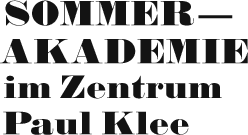Sommerakademie im Zentrum Paul Klee
16 - 26 August, 2012
TIN SOLDIERS AND NIXON COMING
“The headlight child could graphically be a comet, which would have its tail in front...”(Marcel Duchamp in: “The Jura-Paris Road”)
In 1912, Duchamp set out on a journey through the Jura Mountains as a kind of enfant phare, constructing a parallel world as way to imaginatively work through his contested relationship with military conscription. “The Jura-Paris Road”, rendered as a series of notes and communiqués, served as a form of preparation for a reconnaissance mission that also illustrated Duchamp’s concern for the process of a synthesized human potential, mechanical systems, the dimensions of risk and chance, unpredictability and a set of givens, all within a networking whole. The investigations explored provide a rare occasion to reflect upon Duchamp’s political subjectivity in light of his concern with the growing military escalation at the time, while making more explicit the catalysts for his broader imagination around eroticism, mechanization, and dimensional speculation. His impulse in relation to this particular project also lays the groundwork for later Situationist strategies, such as psychogeography and detournement, practices useful as ways to observe the shifting paradigms in the art world today, from that of the site of the art institutional - economic - to that of the cultural ad hoc -political.
The Sommerakademie 2012, entitled "Tin Soldiers and Nixon Coming", extended the forum opened up in “The Jura-Paris Road” beyond the historical framing of Duchamp’s address concerning individual conscription, to fathom the constellations of his investigations in relation to the dramatic events of today. Using the lyric from the song ‘ Ohio’, composed by Neil Young in 1970 in relation to the Kent state shootings of protesting students, the title of this year’s Academy encouraged thinking around the relevance of Duchamp’s abstract themes as set against the more radical apects of recent global developments – the Arab Spring, the occupy movements, the dissolution of Europe, the implosion of intellectual and critical rigor under pressure from an encroaching mainstream, and a corrosive disengagement with climate issues. Composed at a time of mass draft avoidance in relation to the then escalating Viet Nam war, the lyrics also reference the initiation of an era of post global capitalist modernity, taking its route from the 1973 oil embargo and setting up the evolving spatio-temporal dimensions for our present practices.
“The Jura-Paris Road” lended itself as a thinking platform from which to explore or even exercise, for example, the encounter of the exotic, the theme of scientific improbability, the notion of general constriction along rational lines, of subterfuge, chance and strategy. On a more abstract note, these themes were interwoven with what a normal journey as part of a group or as an individual would entail – shifting personal relationships in an unsettled environment of dimensional change, inscribed by more specific relations related to territorial advantage, the language of deployment, secret modes of address, colonial conquest, the human machine metaphor (or contestation thereof), mythology, hierarchical control (and its abandonment), preparation for the unpredictable, the social tensions of the meal, conviction, blind faith, the problem of gender, and problems of nationalism.
At the same time, “The Jura-Paris Road” inferred an abstract journey/concept through a territory that implies the necessity to draft an informal network of unforeseen meeting places, incidental cafes, the canteens of private realms and domains, as it does the physical occupation of established space which is achieved through practice and coordination in unfamiliar dimensions. Although the Jura-Paris notes of Duchamp take into account allusions to dimensional space and communication from a distance, the work also incorporates the more prosaic character of the route itself, the weather conditions, its duration, the liaisons and travel companions, the bonhomie of the travel, including the language of the perverse (army slang), motor excursions to merge eroticism, with the electro-magnetic engineering and dimensional speculation.
The transposition of these topics, thinking, doing, projecting, viewing, consuming, assumed the form of abstract constellations throughout a ten-day process of open-ended plans and excursions, cultural encounters and sessions, meal preparations and discussions, to experience moreover than to conclude with yet with the ever prepared stance toward the inevitable in mind.





